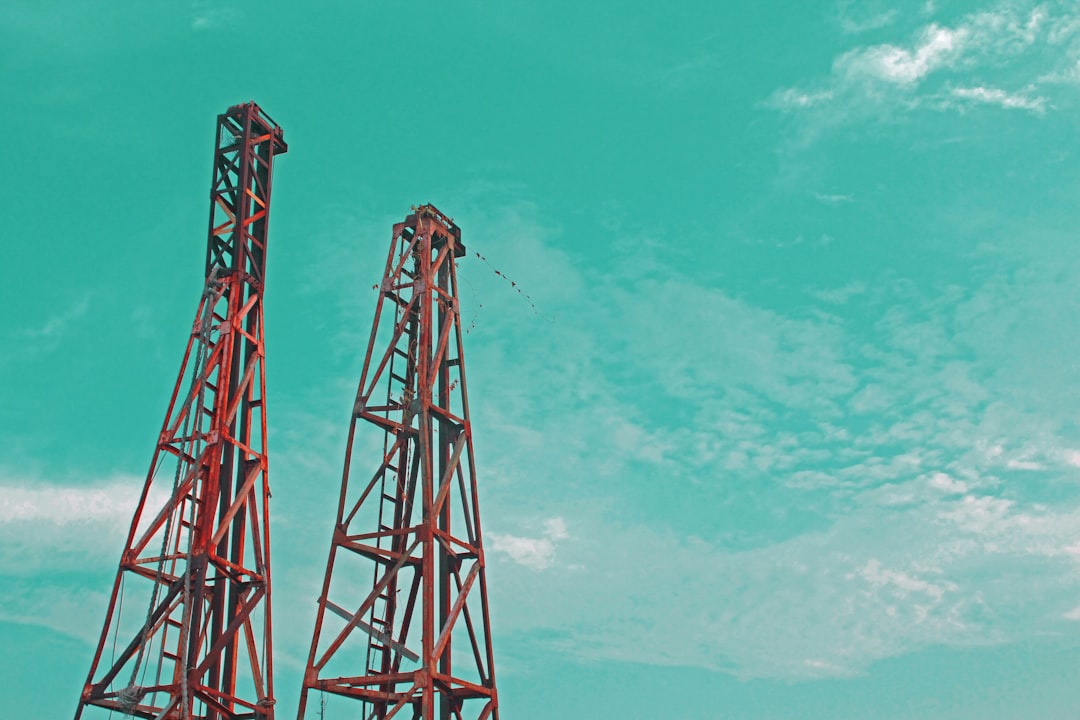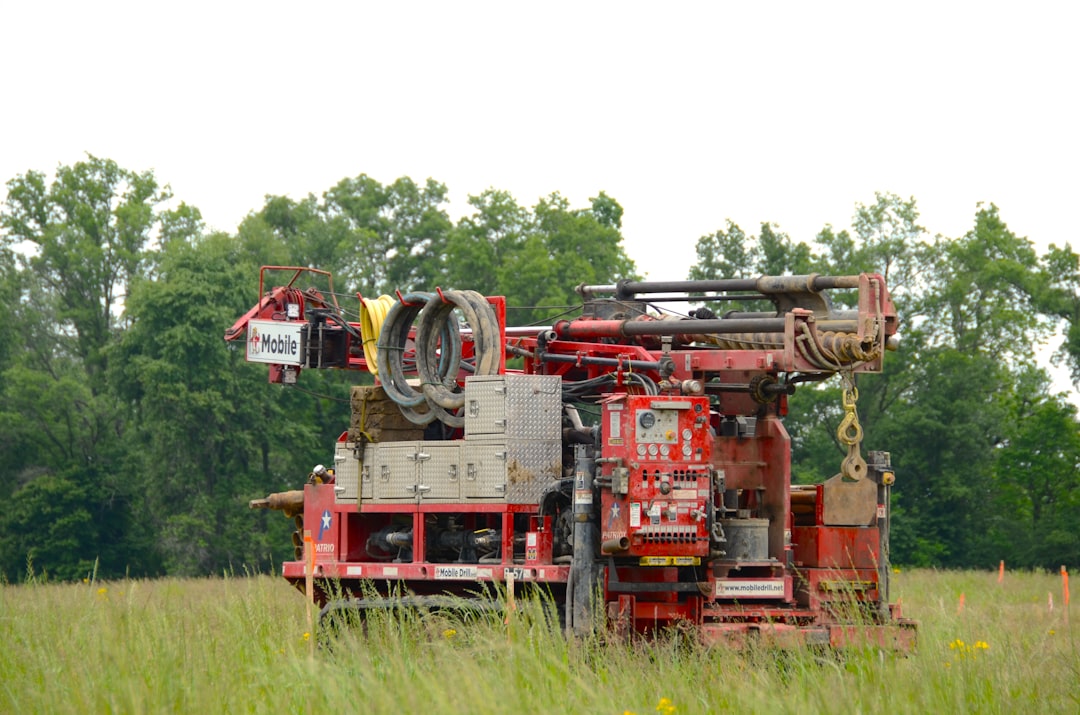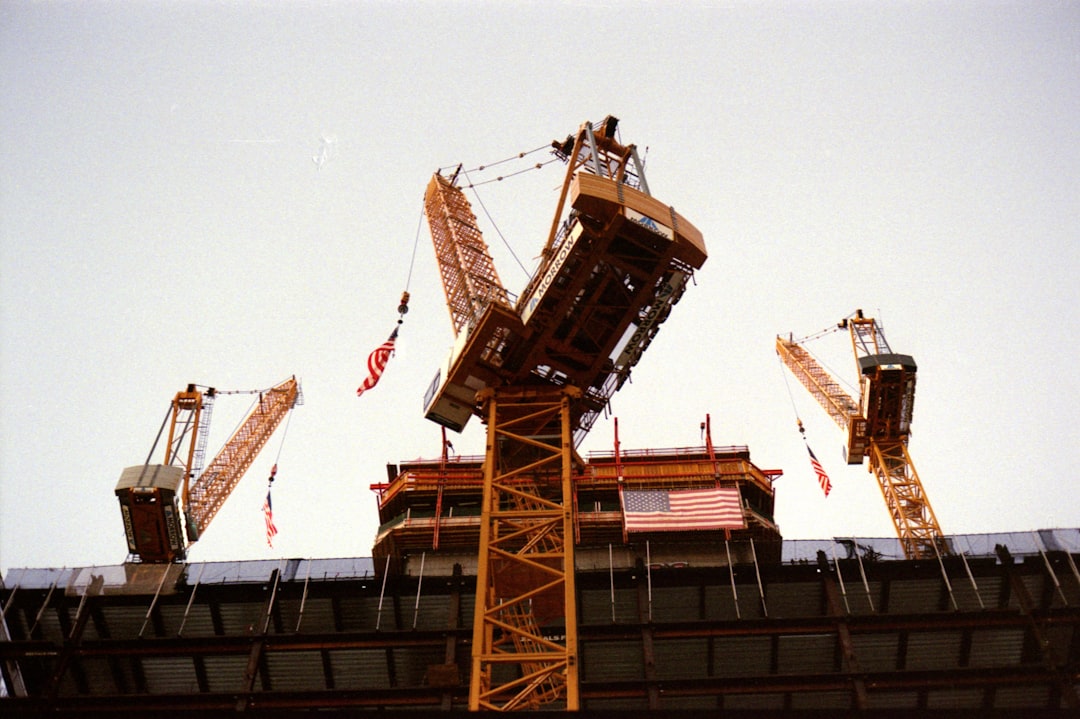

Engage prospects with a scan and streamline customer engagement with FREE QR code marketing tools by Sona – no strings attached!
Create a Free QR CodeFree consultation

No commitment

Engage prospects with a scan and streamline customer engagement with FREE QR code marketing tools by Sona – no strings attached!
Create a Free QR CodeFree consultation

No commitment
In today’s digitally driven construction landscape, drilling contractors face the ongoing challenge of connecting onsite realities with digital engagement. Missed connections with high-value prospects and reliance on inefficient manual processes often result in lost opportunities and delayed project cycles. Traditional paper forms, static signage, and fragmented communication are tough to scale and lack the real-time visibility needed for rapid response in high-stakes environments.
QR codes have become a strategic solution, transforming formerly passive onsite interactions into dynamic digital touchpoints. With thoughtful deployment, QR codes connect the physical and digital experience for contractors: from streamlining field data entry and automating client follow-ups to improving asset tracking and compliance documentation. Instead of missing out on potential leads because a prospect did not complete a web form, QR-driven workflows surface valuable intent signals and help recover lost business opportunities.
By embedding QR technology into daily operations, contractors can accelerate lead generation, enrich account-level insights for targeted marketing, automate asset logs, and improve customer response times. This guide demonstrates how QR code adoption with Sona QR, supported by robust tracking tools and seamless integration, enables drilling contractors to convert routine processes into drivers of business growth, efficiency, and client loyalty.

For many drilling contractors, inefficient information capture from onsite interactions results in missed leads, administrative bottlenecks, and lost revenue. QR codes in marketing provide a bridge between physical touchpoints and digital workflows, giving stakeholders direct access to resources, forms, or feedback tools. When designed with clarity and placed where action happens, QR codes remove friction from every interaction and make outcomes measurable.
Replacing analog processes is the fastest path to value. Printed brochures become dynamic service catalogs with pricing calculators. Paper jobsite forms become mobile-ready digital submissions that auto-populate your CRM. Manual sign-up sheets at a trade show turn into instant quote requests with automated routing. These are not small wins; they reduce labor, cut error rates, and speed up the time from interest to action.
Here is a straightforward way to implement QR codes and see results quickly:
Successful drilling contractors link QR codes on equipment to smart asset logs and CRM systems. As a result, they automate data capture, surface high-intent actions in real time, and enable dynamic nurturing based on the needs and timing of the scanner.

Visibility is a constant challenge in drilling, whether tracking engagement with marketing assets or monitoring equipment usage. Missed buying signals hinder timely follow-ups and obscure the identity of potential clients. QR codes solve this by creating instant, practical touchpoints that reveal engagement from traditionally offline or anonymous interactions. When you add QR codes to jobsite signage, bid packets, or expo displays, you give prospects a one-scan path to act and capture data that previously disappeared into thin air.
Dynamic QR platforms enable real-time updates to destinations, which keeps messaging current without reprinting materials. Built-in analytics provide insights into which placements or campaigns drive engagement and help you prioritize the channels that move the needle. Compared to generic website analytics, QR codes add context to where engagement originated in the physical world, such as a rig panel, a project fence, or a conference booth. For marketers and operations teams, this makes offline activity measurable and actionable, which is essential in a high-stakes, time-sensitive environment like drilling.
The right QR format unlocks value at every operational touchpoint. Choosing the correct destination and behavior ensures scanners get what they need without friction, and your team gets clean, structured data.
Dynamic QR codes are ideal for most drilling use cases because requirements evolve. You might update a maintenance form, swap a video for a newer procedure, or temporarily redirect equipment codes during a recall. Static codes can work for evergreen destinations, such as a public safety guideline PDF that rarely changes.

Drilling contractors often overlook valuable engagement moments because physical interactions are not tracked. Growth happens when high-traffic touchpoints become digital entry points that feed your pipeline and streamline operations. Begin by mapping your customer journey and operational workflow to identify points where a scan could replace a phone call, a manual email, or a clipboard.
A strategic placement plan ensures every interaction is measurable. The resulting data will highlight high-value accounts, reveal which assets generate the most engagement, and guide budget allocation toward the most productive channels.

QR codes are most effective when aligned with specific workflows and outcomes. The following use cases are proven across drilling operations and business development.
Each use case should be paired with a simple CTA and a short path to a clear action. When you remove ambiguity and clicks, adoption increases and data quality improves.
Contractors frequently lose visibility after first contact, especially when prospects pick up a brochure at a conference or view a truck on the highway. Every QR scan becomes a high-intent signal that you can use to segment audiences and retarget with precision. With multiple codes deployed across touchpoints, you gain clarity on who is engaging, which services they care about, and when they are most receptive to follow-up.
Start with audience distinctions that reflect how drilling services are purchased. Separate general contractors, engineering firms, and municipal buyers. Distinguish environmental consultants from homeowners seeking private wells. Tag scans by region, job phase, and service line. Then use those tags to tailor your nurturing sequence, whether the next step is a technical brief, a cost estimator, or a scheduler link for a site walk.
See Sona’s Playbook titled ‘Intent-Driven Retargeting: Driving High-Impact Campaigns with First-Party Intent Signals’ for a step-by-step approach to operationalizing these signals.
With Sona QR, each code becomes a smart entry point into your funnel. Scan events can be synced automatically to create lists for account-based retargeting, alert territory managers, or launch nurture sequences that reflect a buyer’s service interest and urgency. Start creating QR codes for free.
QR codes are the connective tissue across your offline and digital campaigns. For drilling contractors who rely heavily on field presence, trade shows, and printed materials, this connection is vital for scale and attribution. When codes are consistently deployed and managed from a central platform, you get a true picture of how each channel contributes to pipeline and revenue.
Integrate QR codes into the channels that already work for you. Make every printed piece interactive and measurable, and use scan behavior to refine your content. A centralized platform like Sona QR lets you manage codes, monitor performance, and sync scan data to your CRM and ad accounts, so the insights flow throughout your stack.
A connected offline-to-online funnel helps you bridge gaps in attribution, segment your audience by behavior, and sustain momentum from initial interest through contract award.
QR deployment is not complicated when you frame it as a repeatable process. Start small, build confidence with a pilot, then expand across assets and teams. The steps below turn strategy into practice, while preserving flexibility for your unique workflows and markets.
Clarify the primary outcome you want from your first QR rollout. Select a use case that is close to revenue or removes a costly bottleneck, such as instant maintenance requests on rigs or quote capture at a regional expo. If you handle municipal bids, consider codes on prequal packets that route to compliance documents so procurement teams can verify on the spot.
Select the type that supports your goals and the level of measurement you need. In most cases, dynamic codes are the right choice because they enable tracking, retargeting, and edits without reprinting.
A scan-friendly code is clear, compelling, and reliable in field conditions. Design for the environment in which it will live.
Roll out where scanning is most likely and action is most valuable. Think in terms of foot traffic, dwell time, and proximity to decision points.
Measure performance, then refine placement, messaging, and workflows to improve outcomes. This is where QR moves from experiment to engine.
Each of these steps reduces missed prospects and unrecorded asset data. As results improve, standardize the process so it becomes a repeatable part of your marketing and operations playbook.
QR analytics are not a vanity measure. They are the foundation for attribution and process improvement. For drilling teams, the value is twofold. First, you gain operational clarity by seeing which equipment, crews, or sites generate the most activity. Second, you gain commercial clarity by tying scans to leads, opportunities, and booked work. Without this, you risk guessing where to spend time and budget.
Start by capturing the basics: scan volume by day and by placement, device breakdown, and completion rates for the intended action. Then move to deeper insights: which event drove the most qualified requests, which yard sign converts passersby into consultations, and which equipment codes generated the fastest maintenance approvals. When these insights sync with your CRM, they inform account strategy and forecasting.
Sona QR captures real-world engagement in one dashboard. Sona.com turns that engagement into revenue insights, linking QR scans with website visits, ad clicks, email engagement, and CRM activity. Together, they help you build a complete picture from first touch to purchase readiness, so QR becomes a core component of your performance strategy.
QR success compounds when you treat codes as part of a system rather than a one-off tactic. A few best practices can dramatically improve scan rates, data quality, and downstream conversion. Focus on clarity, context, and continuity, and back every deployment with a defined next step.
A creative deployment can also drive outsized results. For example, include QR codes on rig inspection tags that open pre-filled forms for the exact asset, or add a QR to invoices that lets clients view bore logs and request post-project services. These small touches streamline work and plant seeds for repeat business.

A large drilling firm revamped its conference presence by adding QR codes to booth banners and demo rig placards. Instead of relying on paper sign-up sheets that were often incomplete or illegible, the team captured contact data directly into their CRM and routed requests to service-specific queues. Within one quarter, they attributed a meaningful increase in qualified opportunities to event scans, and they refined their collateral based on which codes drove the highest conversion.
Field technicians at a regional contractor applied durable QR labels to compressors and water trucks, each tied to an equipment profile page and maintenance form. Crews scanned the code, uploaded photos, and submitted tickets in under two minutes. Fleet managers monitored activity and prioritized repairs by urgency and impact on schedule. The result was fewer manual entries, better data integrity, and improved asset uptime.
Contractors also integrated QR surveys into job completion packets. Clients scanned a code to rate quality, responsiveness, and safety performance, and to signal interest in additional services such as dewatering or monitoring well installation. The feedback loop produced actionable insights that informed training and helped the business identify upsell opportunities. Compared to manual processes, these QR-enabled workflows delivered better compliance, fewer lost leads, and more timely follow-ups.
QR codes perform best when you design for the real world and respect the scanner’s time. Prioritize durability, clarity, and relevance. Ensure every scan results in useful content or a simple action, and maintain high standards for data privacy and security.
Contractors who embrace digital solutions over manual processes set a new standard for efficiency and engagement in the drilling industry. Embedding QR codes into assets, workflows, and marketing channels ensures every interaction is measurable and actionable, which reduces lost opportunities and enhances the customer experience. Whether recapturing interest from anonymous visitors, addressing compliance and maintenance in real time, or personalizing follow-up with detailed engagement data, QR solutions offer drilling contractors a clear pathway to digital transformation. The journey begins by identifying the right high-impact touchpoints and converting everyday workflows into lasting value for your business and clients.
QR codes have transformed the drilling contractors industry by enabling seamless access to critical information, improving safety protocols, and streamlining equipment management. Whether it’s enhancing operational efficiency, providing instant access to technical data, or facilitating faster communication on-site, QR codes eliminate manual bottlenecks and deliver real-time insights that drive smarter decisions and safer job sites.
Imagine instantly accessing up-to-date equipment manuals or safety checklists right from your mobile device, reducing downtime and preventing costly errors. With Sona QR, you can create dynamic, trackable QR codes in seconds, update content instantly without reprinting, and monitor every scan to optimize on-site workflows and compliance. No more guesswork—just actionable data that empowers your team to perform at their best.
Start for free with Sona QR today and turn every scan into a gateway for safer, more efficient drilling operations.
Contractors can promote services such as geotechnical drilling, environmental remediation, water well services, and equipment maintenance through QR codes linked to service catalogs, quote requests, and technical documentation.
Choose contractors who implement digital workflows like QR code systems for asset tracking, compliance, and lead management, as these enhance efficiency, reduce errors, and improve client communication.
Drilling contractors are adopting QR code technology integrated with CRM systems and dynamic tracking tools to automate data capture, streamline maintenance requests, enable real-time compliance verification, and enhance client engagement.
Contractors should use durable, tamper-evident QR codes to meet compliance documentation needs, place codes for easy safety check-ins and audits, and ensure data privacy and security by collecting only essential information and integrating with industry-standard systems.
Ensure quality by verifying that the contractor uses QR-enabled equipment logs, maintenance forms with photo documentation, and client portals with project updates, which improve transparency, reduce downtime, and provide verifiable audit trails.
QR codes convert physical touchpoints like trade show banners or vehicle signage into digital entry points that capture prospect data, trigger automated follow-ups, and provide detailed engagement analytics for targeted marketing.
Common formats include web links to service catalogs or manuals, vCards for contact sharing, form links for inspections or feedback, app download links, and SMS or email triggers for quick service requests.
Effective placements include jobsite entry signs for check-ins, equipment panels for maintenance requests, fleet vehicles for location-based inquiries, trade show displays for lead capture, and project documents for verification and feedback.
Success is measured by tracking scan volume, location, device type, form completion rates, lead quality, and conversion metrics, then optimizing placement and messaging based on these analytics.
They should select a clear use case, choose appropriate code types (dynamic preferred), design and test for scannability, deploy codes at high-impact locations, and monitor and optimize performance through analytics.
QR codes on spill kits or first-aid stations provide instant access to emergency procedures, safety data sheets, and incident reporting forms, enabling faster response and thorough documentation.
By linking QR codes in bid packets or emails to client portals with FAQs, project milestones, and contact info, contractors reduce inbound calls and provide a transparent, professional experience.
Use unique codes per asset, add UTM parameters for tracking, trigger automated follow-ups for high-value scans, educate users on scanning benefits, and ensure durable, high-contrast codes placed in accessible locations.
They capture scan context like time, location, and campaign source, sync data with CRM and marketing platforms for lead nurturing, use alerts for timely responses, and apply multi-touch attribution to connect scans to booked work.
Avoid generic landing pages, poor code placement, low durability materials, unclear calls to action, and neglecting data privacy and security standards.
Use Sona QR's trackable codes to improve customer acquisition and engagement today.
Create Your FREE Trackable QR Code in SecondsJoin results-focused teams combining Sona Platform automation with advanced Google Ads strategies to scale lead generation

Connect your existing CRM

Free Account Enrichment

No setup fees
No commitment required

Free consultation

Get a custom Google Ads roadmap for your business






Launch campaigns that generate qualified leads in 30 days or less.
